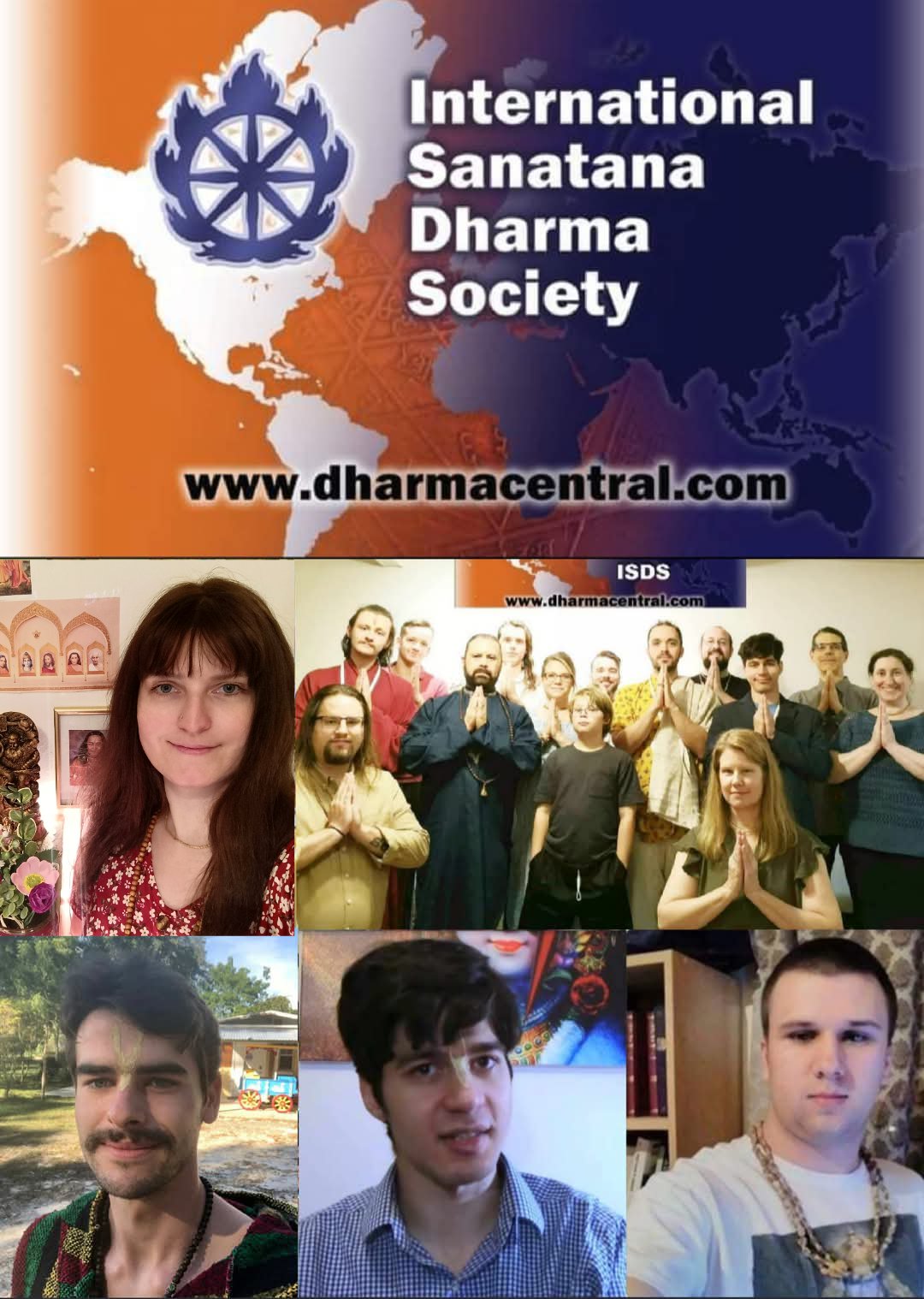Shri Krishna and his Indian identity shine from Mathura’s dust to Vrindavan’s forests. His Indian identity features as the heartbeat of Bharat’s spiritual saga. But a set of neo-Hindus – the followers of the International Sanatana Dharma Society – recently denied this truth. The website of ISDS claims they are not “neo” in any way or thought – rather want to live the vedic way in the modern era as traditionalists.

However, ISDS’ members firmly claim, via Old-English translation of a few Shrimad Bhagavatam translations, that “Criscna ne is nā ‘Indisc'” – i.e. “Krishna is not Indian.” This provocative assertion tries to elevate Bhagwan Krishna to a global, placeless deity at the cost of his earthly roots as an Avatar. When will they stop misleading, misquoting, and diminishing Sanatana Dharma and its truths?!

Old-English Spin Doesn’t Change Facts on Shri Krishna
The ISDS member posted the following as an X-post :
“Criscna ne is nā ‘Indisc’. … Hē hafap nāne innhealfe oppe ūthealfe. … Sēo gehāle ġesceaft þe āspringep fram Him…”

A rough machine translation of the text is: “Krishna is not Indian. He belongs to no particular origin. His creation sprang from him alone…” They aim to cast Shri Krishna as a cosmic force detached from Bharat. While Srimad Bhagavatam does describe Lord Krishna as the Supreme God beyond time, it is also a part of the Mahabharat that chronicles the Lord’s life in Bharat.
The Bhagwat Puran and the Vishnu Puran tell of Bhagwan Krishna’s birth in Mathura. Moreover, these scriptures tell very-human-yet-divine tales of Bhagwan Krishan during his upbringing in Gokul and Vrindavan. Thus, using the Srimad Bhagavatam to remove Shri Krishna from his Indian roots strips Lord Krishna of his divine leelas as a human and cultural context. This move reeks a complete One-Book-Distortionism of the Supreme Consciousness of the world by disciples of a sect that do not fully grasp the Bhagwad Gita, Sanskrit, or Sanatana Dharam.
Sanatana Dharma under Spiritual Colonialism?

Sanatana Dharma literally means “eternal law or duty” not “non-Indian faith.” Scholars, seers, and peethadeesh clarify to all convertees that while Sanatana Dharma represents timeless spiritual principles, it emerged and thrived on the Indian subcontinent. Today, India is the name given to this geographical region and the colonial umbrella term for Indian religion was Hinduism!
Yet, somehow when some neo-Hindus read the Bhagwad Gita they come up with the notion of separating the sanatana Dharma or its many gods from its roots in Bharat!

Sanatana Dharma honors its cultural roots within Bharat while allowing universal relevance. One doesn’t need to erase Shri Krishna’s Indian heritage to honor his cosmic stature. Painting him as “placeless” disregards thousands of years of devotion in Mathura, Gokul, and Dwarka – the very places where his miracles occur as pastimes – denies the reality of his Avatar. Some schools within Sanatana Dharma believe Shri Krishna to be the Supreme Bhrama which is more than Lord Vishnu – while others argue that Shri Krishna was the most relateble Avatar of Lord Vishnu in Dwapar Yuga! All these conversations and discussions never deny the reality of Shri Krishna or his roots in Bharat!

If devotion turns into distortion, it borders on transient spiritual tourism or cultural appropriation. And these posts by ISDS members borders very close this dangerous edge. To further cement their perceptions, these neo-converts cherry-pick quotes from Shila Prabhupada , like:
“The Krishna consciousness movement has nothing to do with the Hindu religion…”
Thereby, trying to use ISKCON to attack Hinduism and validate their misconception regarding Shri Krishna.

The ISKCON may be a global revolution that is based on varna and ashram ideology, but it doesn’t separate Shri Krishna from his Indian roots. Prabhupada emphasized that Shri Krishna’s consciousness transcends ethnic labels but didn’t deny his historical life in Bharat. Misquoting texts or quotes creates a slippery slope toward spiritual colonialism. It privileges detached theology while disrespecting the lineage of Indian bhakts who’ve carried Lord Krishna’s message and values through centuries.
Sanatana Dharma Must Reclaim Shri Krishna’s Indian Essence

Calling Shri Krishna “not Indian” isn’t harmless semantics. It erases cultural heritage and undermines the authentic lineage of belief. It empowers cult-like detachment, inviting followers to forget their roots. The word Hindu may be a geographical notation adopted by the colonial British to define Sanatanis. However, if Sanatanis are Hindus then so was Shri Krishna!

Hindus today must see this as “poisonous appropriation” – a slow cultural erosion that will one day undermine the sacred continuity of the Hindu faith.

The Indian identity of Shri Krishna Indian grounds his cosmic divinity in real geography and lived history. Yes, he transcends worldly bounds – but he also walked this earth, spoke the Gita on Kurukshetra’s battlefield, lived among people, and loved cows & flute melodies. Claiming Bhagwan Krishna wasn’t Indian reduces him to an abstract concept, robbing believers of cultural richness.
Sanatana Dharma includes universality — but can’t forget where its roots lie.
Hindus must challenge this misdirection and hold firm: Krishna may be universal, but he is also undeniably Indian.


